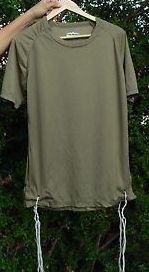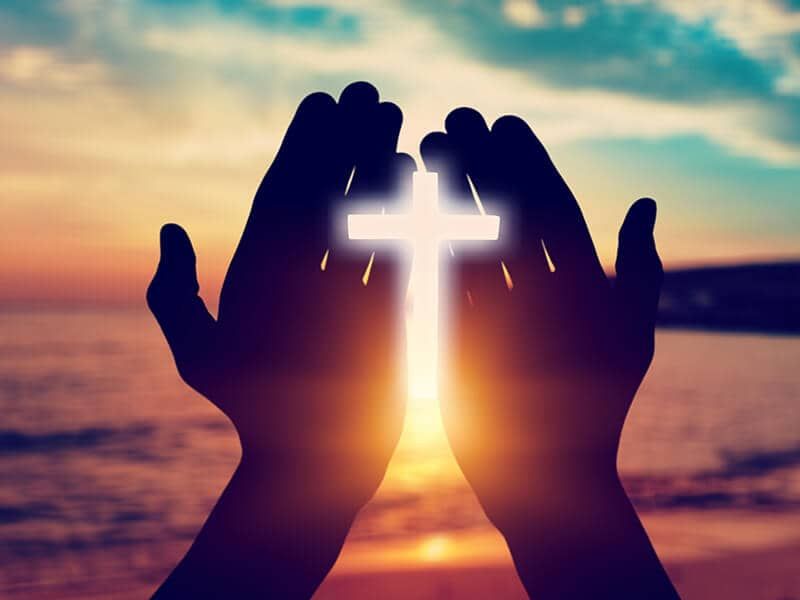Numbers 15:37-41
לז וַיֹּאמֶר יְהוָה, אֶל–מֹשֶׁה לֵּאמֹר.
And the LORD spoke unto Moses, saying:
לח דַּבֵּר אֶל–בְּנֵי יִשְׂרָאֵל, וְאָמַרְתָּ אֲלֵהֶם, וְעָשׂוּ לָהֶם צִיצִת עַל–כַּנְפֵי בִגְדֵיהֶם, לְדֹרֹתָם; וְנָתְנוּ עַל–צִיצִת הַכָּנָף, פְּתִיל תְּכֵלֶת.
Speak unto the children of Israel, and bid them that they make them throughout their generations fringes in the corners of their garments, and that they put with the fringe of each corner a thread of blue.
לט וְהָיָה לָכֶם, לְצִיצִת, וּרְאִיתֶם אֹתוֹ וּזְכַרְתֶּם אֶת–כָּל–מִצְוֺת יְהוָה, וַעֲשִׂיתֶם אֹתָם; וְלֹא–תָתוּרוּ אַחֲרֵי לְבַבְכֶם, וְאַחֲרֵי עֵינֵיכֶם, אֲשֶׁר–אַתֶּם זֹנִים, אַחֲרֵיהֶם.
And it shall be unto you for a fringe, that ye may look upon it, and remember all the commandments of the LORD, and do them; and that ye go not about after your own heart and your own eyes, after which ye use to go astray;
מ לְמַעַן תִּזְכְּרוּ, וַעֲשִׂיתֶם אֶת–כָּל–מִצְוֺתָי; וִהְיִיתֶם קְדֹשִׁים, לֵאלֹהֵיכֶם.
that ye may remember and do all My commandments, and be holy unto your God.
מא אֲנִי יְהוָה אֱלֹהֵיכֶם, אֲשֶׁר הוֹצֵאתִי אֶתְכֶם מֵאֶרֶץ מִצְרַיִם, לִהְיוֹת לָכֶם, לֵאלֹהִים: אֲנִי, יְהוָה אֱלֹהֵיכֶם.
I am the LORD your God, who brought you out of the land of Egypt, to be your God: I am the LORD your God.’
Tzitzit [tsiˈtsit] (Hebrew: צִיצִית, Modern: tsitsit, Tiberian: sˤisˤiṯ; plural tsitsiyot) are specially knotted ritual fringes, or tassels, worn in antiquity by Israelites and today by observant Jews and Samaritans.
You don’t see too many people running around with Tzitzit, or tallit katan (small tallit) unless you’re in Israel. However, if you follow YHWH and His mitzvot then you are ordered to wear tallit – it’s not optional.
This is our coat of arms as given by YHWH, if you understand the meaning. Simply put the colors are our clan’s banners, our perpetual flag. No other flag or symbol, including the Star of David, Mogen Dovid, replaces the colors set out by YHWH.
As it is written,
“bid them that they make them throughout their generations fringes.”
Which if you follow HaShem then this is what you do – you wear Tzitzit… IN PUBLIC, in BUSINESS MEETINGS, at Venture Capital closings, at Walmart, everywhere you go.
If you are embarrassed to wear your Tzitzit, because you are afraid of what people may say, then YHWH rejects you. If you fear men more than the mitzvot of YHWH then you have already failed.
If you use the excuse why you don’t wear Tzitzit in public because “it will only lead to antisemitism,” then I say this to you,
“But now, thus says the Lord, who created you, O Jacob,
And He who formed you, O Israel:
“Fear not, for I have redeemed you;
I have called you by your name;
You are Mine.” Yeshayahu 43:1
I see billionaires who claim to be Jews and I see them making their talks to many people as celebrities and I say, “where is your Tzitzit?” Do you know what kind of message you could be sending to the community like actor Liev Schreiber.
May YHWH bless Liev Schreiber for displaying Tzitzit to the people. For this is the glorification of Eloheinu, to follow His mitzvot, follow His Mashiach, and enjoy the blessings He provides for us in doing so.
When we see our leaders and our wealthy business owners parading around without Tzitzit, this really sets a tone to not care about the mitzvot.
If a fan of Michael Bloomberg says, “Mr. Bloomberg does not wear Tzitzit at business meetings, why should I?”
So we have to be mindful about our status before the people and what kind of message we are putting out – whether we hide and fear men, or be obedient to YHWH and strengthen our clan.
What we see as tradition passed down through the millenia you end up with the term “prayer shawl” where in fact this was never meant to be worn just in prayer but in everything we do.
Can you imagine Joshua, while en route to Jericho, announce to everyone, “Hey, ahh, I forgot my tallit. Lets go back so I can get it.”
As ridiculous as that sounds, that’s the whole point, it’s why YHWH commanded fringes to be sewn in the garment for several reasons:
- look at the fringe and remember all the commandments of YHWH
- the fringe reminds you not to follow after your own heart and what you see with your eyes which make you go astray
- reminds you to do all the commandments of YHWH
- be holy before the Lord
The problem today is that within Yeshiva no one goes to the source of the word of YHWH, they are more immersed in commentary from “sages” which does cause allegorization, misinterpretation, or manipulation of God’s word.
This is why there is confusion about the blue strand (tekhelet) in the fringe. Talmud commentators erroneously stated that Israelites could only make the blue dye with chilazon, which come around every seventy years.
Instead of listening to YHWH who said, “use a blue thread,” Rabbi decided to listen to Talmud commentators who said, “the blue thread no longer exists.”
“Furthermore, the mitzvah of reciting the morning Shema begins when it is light enough for one to distinguish between white and techelet.3 Since we no longer have the techelet, the black stripe in the cloth of the tallit can be used to ascertain whether the time for reading the Shema has yet arrived.”[1]
Above is how the word of YHWH is blasphemed by telling students they do not need to wear the fringe with blue.
“Since only four-cornered garments require tzitzits, strictly speaking, there is no obligation for men to wear tzitzits, but it is an accepted custom to wear a wool or cotton tallit katan all day, every day, to carry out the mitzvah.”[2]
It’s not an accepted custom, it’s a command by YHWH for all generations. This is what happens when you only read Talmud instead of the actual word of God.
YHWH did not spell out how you could dye the thread blue, but we are commanded to USE BLUE – NOT BLACK.
Below is what you should not believe or do:
“The verse contains two requirements. One is to affix (white) fringes on the corners of a four-cornered garment, and the other is to add a thread of tekhelet to each corner. These two requirements are independent of each other. When tekhelet is available, we are enjoined to add a tekhelet fringe to the tzitzit; when unavailable, we fulfill the mitzvah with plain white fringes.”[3]
Incorrect, YHWH specifically says there will be a blue thread – this is not independent and it’s not a choice, it’s mitzvah. You can either choose to listen to sages or listen to YHWH.
In this modern world there is ample amounts of blue dye, and it does not have to be from a sea creature as supposed by men. We are not living in a time 1,500 years ago, we have blue, and YHWH commands us to use blue.
Obey God not false teachers – use tallit or tzitzit with blue thread or you are in disobedience.
Now the importance of wearing tzitzit openly is that you are displaying to the world:
- that you choose to follow YHWH
- people will ask “what is that?”
- you will tell people why you wear fringes Deuteronomy 11:19
You don’t have to wear a prayer shawl around town, unless you choose to, as this is tradition as well. The fringes are on the corners of your garments, whether shorts, shirt, or shawl.
Common sense, shorts and jeans did not exist three millennia ago. Now you can display tzitzit, without wearing a draping shawl in 95F/35C weather.
Many say “make sure it is kosher Rabbi approved” but then your Rabbi says you don’t have to wear blue! – that is not kosher! They have a similar program with the IDF, where the tzitzit is OD green – not kosher.
It is ok if the shirt is OD Green, but the tzitzit must have blue thread amidst the tassle.

More importantly every time you see your clothes you will remember the word of YHWH – this is the goal and why the commandment was given – including the blue thread.
Just as the blue thread is in the midst of the tassle, so to is the word of YHWH within the midst of all those who follow HaShem.

